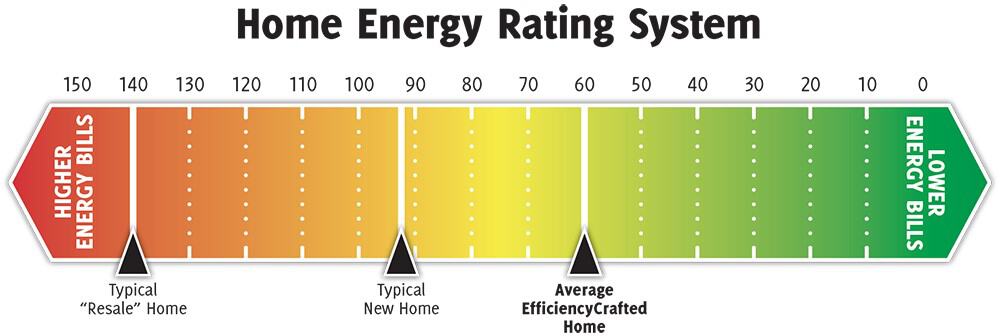If you’re in the process of building a new home, you may have heard about HERS testing. But what exactly is a HERS rating, and why is it important? In this blog post, we’ll break down the HERS testing process and explain how it can help you save money on your energy bills in the long run. We’ll also discuss the different components of a HERS rating and what they mean for the overall energy efficiency of your home.

What is a HERS rating?
HERS stands for Home Energy Rating System. A HERS rating is a comprehensive evaluation of the energy efficiency of a home, based on factors such as insulation, windows, doors, heating and cooling systems, and overall building envelope tightness. The rating is calculated on a scale of 0 to 150, with a lower number indicating a more energy-efficient home.
Why is a HERS rating important?
A HERS rating is important for a few reasons. First, it provides a clear picture of the energy efficiency of your home, which can help you identify areas where you can make improvements to save money on your energy bills. Second, many states and municipalities require a HERS rating as part of the building code. Finally, a HERS rating can be a valuable selling point if you decide to sell your home in the future.
What are the components of a HERS rating?
A HERS rating is made up of several components, including:
Building envelope: This includes the walls, roof, windows, and doors of your home. A HERS rater will evaluate the insulation levels and air sealing of these components to determine their overall energy efficiency.
Heating and cooling systems: The efficiency of your heating and cooling systems plays a big role in your home’s overall energy use. A HERS rater will evaluate the efficiency of your furnace, boiler, air conditioner, and heat pump to determine their impact on your energy bills.
Ductwork: If your home has a ducted heating or cooling system, the efficiency of your ductwork is also important. A HERS rater will evaluate the tightness of your ducts and the efficiency of your duct insulation to determine their impact on your energy bills.
Air leakage: The amount of air that leaks in and out of your home can have a big impact on your energy bills. A HERS rater will use a blower door test to measure the air leakage in your home and identify areas where air sealing can improve your home’s energy efficiency.

How can you improve your HERS rating?
If your home receives a high HERS rating, there are several steps you can take to improve its energy efficiency and lower your energy bills. These include:
Adding insulation: Improving the insulation levels in your home can help reduce heat loss in the winter and heat gain in the summer, leading to lower energy bills.
Upgrading your heating and cooling systems: Replacing an old, inefficient furnace or air conditioner with a high-efficiency model can significantly reduce your energy bills.
Sealing air leaks: Sealing gaps and cracks in your home’s envelope can help reduce air leakage and improve energy efficiency.
Installing energy-efficient windows: Upgrading to energy-efficient windows can help reduce heat loss in the winter and heat gain in the summer, leading to lower energy bills.
In conclusion, a HERS rating is an important tool for understanding the energy efficiency of your home. By identifying areas where you can improve efficiency, you can save money on your energy bills and enjoy a more comfortable living environment.

